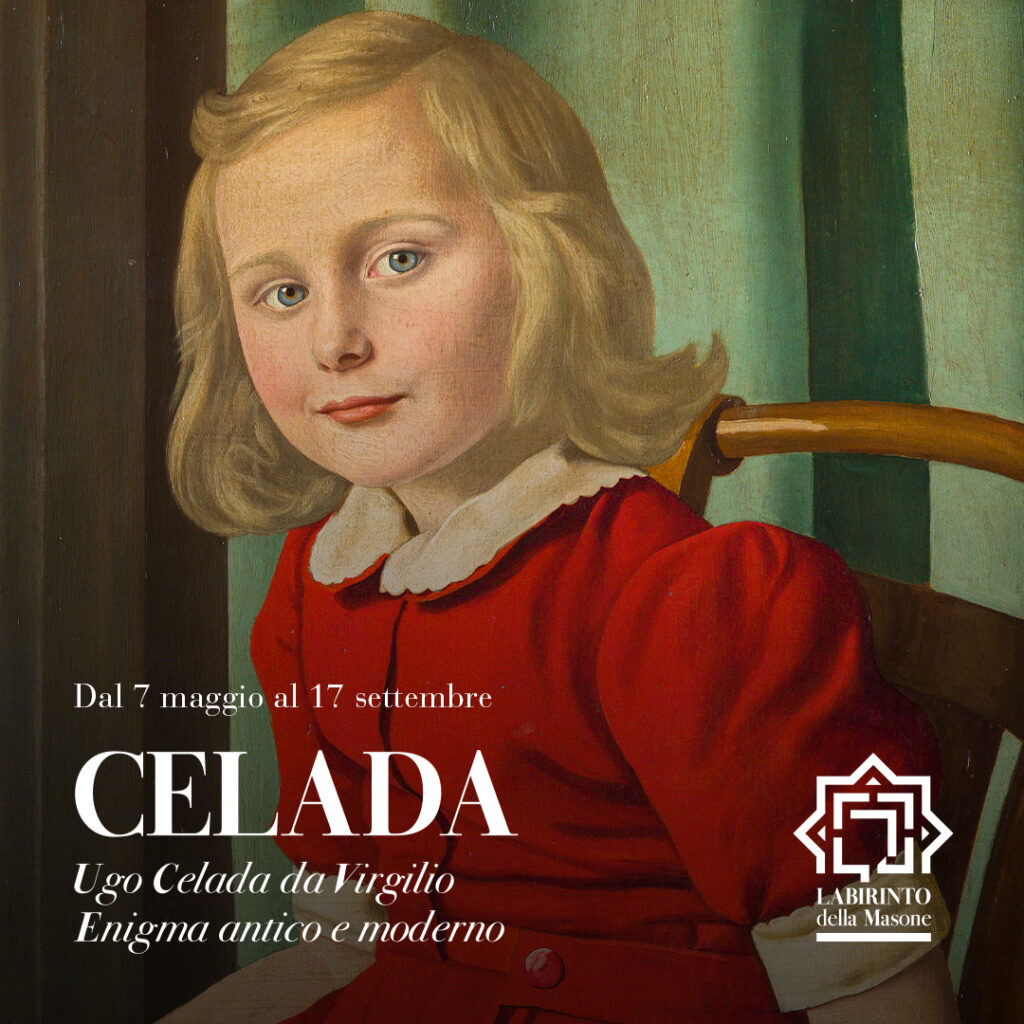
CELADA.
Ugo Celada da Virgilio.
A Discovery Hiding in Plain Sight
7 May - 15 October 2023
Curated by Cristian Valenti
In collaboration with: Fondazione Cavallini Sgarbi; Fondazione Monteparma; MAM - Museo d’arte Moderna dell’alto Mantovano di Gazoldo degli Ippoliti; Mart - Museo di Arte Moderna e Contemporanea di Trento; Museo Virgiliano di Pietole e Comune di Borgo Virgilio
The exhibition Ugo Celada: A Discovery Hiding in Plain Sight has been extended until October 15th, due to the great interest aroused by a peculiar artist whose work spanned the twentieth century, referencing figurative traditions of the past and of his own time while reinterpreting them in his own unique style.
Ugo Celada was born in 1895 in Cerese, in the province of Mantua, known today as Borgo Virgilio, and signed his work with this place name in the tradition of the old masters: for him, it was a statement in principle of his poetics and a confirmation of his stance in the debate between the historical avant-gardes and the Return to Order that took place in the 1920s. Émile Bernard described him as the best Italian artist of his time, referring to his Lying Nude of 1926 (now lost), the ‘Lost Masterpiece’ that represented the pinnacle of his early period.
1931 marked a turning point in Celada’s career, when he expressed his strong opposition to the Novecento Movement of Margherita Sarfatti, an overpowering political-commercial stance which he criticized for having codified official State Art. From that moment onwards, he became increasingly isolated, to the point that he would ultimately be forgotten.
It was only in 1985 that Celada was rediscovered, thanks to Flavio Caroli, who wrote an enlightening essay about him that did not, however, result in the artist being included in subsequent anthologies and exhibitions dedicated to early twentieth-century art. This exhibition, therefore, intends to situate the artist within the cultural context of his time, placing him in unprecedented dialogue with both his contemporaries and old masters.
The exhibition presents around fifty paintings by Celada and other artists, mostly from private collections and including the extremely detailed, almost hyperrealist portrait of an elegant and enigmatic bespectacled gentleman belonging to Franco Maria Ricci’s collection.
The exhibition is divided into three rooms that retrace the different genres the painter explored: family, nudes, portraits, and still lifes. The first room is dedicated to the years of his early training and the emergence of a personal style. It is mainly focused on the circle of people close to the artist, a subject matter well-suited to the intimacy of magic realism; the second room focuses on the representation of the human figure and portraiture. Lastly, we come across still lifes, which the artist appreciated for the infinite possibilities they afforded to render details, and plein air landscapes, which, although not very numerous in his oeuvre, help to demonstrate the versatility of this painter devoted to classicism who tended more towards an idealising objectification that allowed him to focus on the formal and pictorial aspects of painting.
Intriguing juxtapositions may be found in each room: the nudes and female figures are placed alongside canvases by Archimede Bresciani da Gazoldo, who was also from Mantua and is widely thought to have influenced Celada, and Virgilio Guidi, who was very active as a realist artist in the 1920s and 1930s and whom he certainly was acquainted with. The exhibition also includes a Penitent Magdalene by Francesco Hayez from the permanent collection of Franco Maria Ricci, which, when juxtaposed with Celada’s female nudes, brings out their neoclassical aspects, with intensely colored drapery enveloping large swathes of realistically rendered skin.
Prominent among the portraits are paintings by Cagnaccio di San Pietro, a painter who shared a certain sensitivity with Celada and whom he certainly knew and appreciated, having emulated him several times. More explicit references abound: in a self-portrait from the 1930s, the artist portrays himself in three-quarter view with a paintbrush in his hand and a mannequin resting on the table in a clear homage to Giorgio De Chirico, whom he considered to be the only one of his contemporaries who had mastered his art.
Giorgio Morandi is also present in the exhibition, and when seen alongside one another, we may note the similarities and differences in the two artists’ approaches: although they both produced still lifes, Morandi sought the essence of things, while Celada tended towards a representation that heightened reality.
The exhibition will be augmented by a series of objects, such as vases, that resemble those that appear in Celada’s paintings and evoke the style of Venini, Zecchin, Barovier, Scarpa and Seguso, demonstrating the importance the artist placed on the harmony of forms.
“Beyond the unquestionable quality of his painting, what emerges in Celada da Virgilio is the non-negligible value of his experience; he was an exceptional witness of the artistic events of the twentieth century, committed to finding his own way in art, to responding to the great changes and resisting and continuing to live and paint,” says exhibition curator Cristian Valenti. “His work and his attitude constitute an important key to understanding the richness of the artistic context of the twentieth century, beyond simplified historiographic reconstructions organised only around progressive ‘moments of rupture’, to the detriment of research that instead pursues continuity.”
An exhibition catalogue will be published, with a text by Professor Valerio Terraroli.

